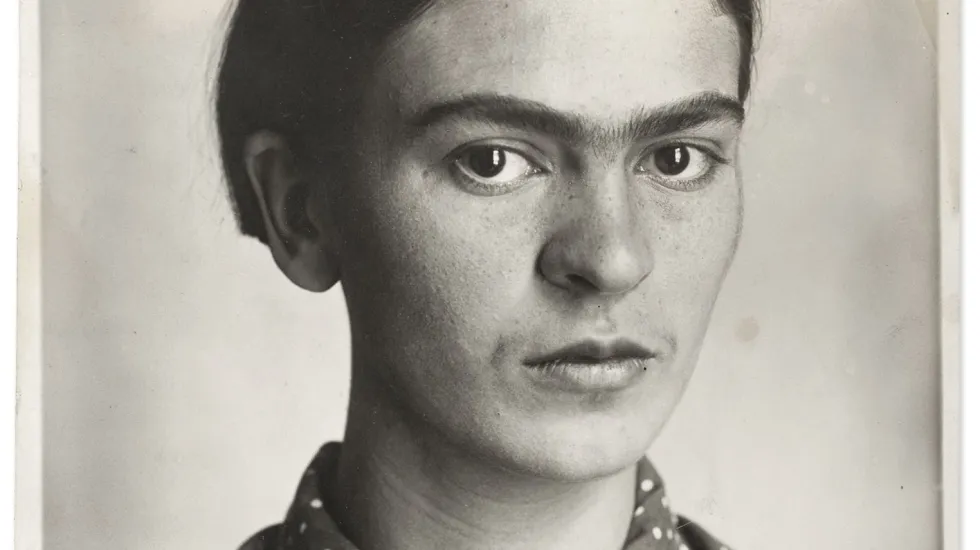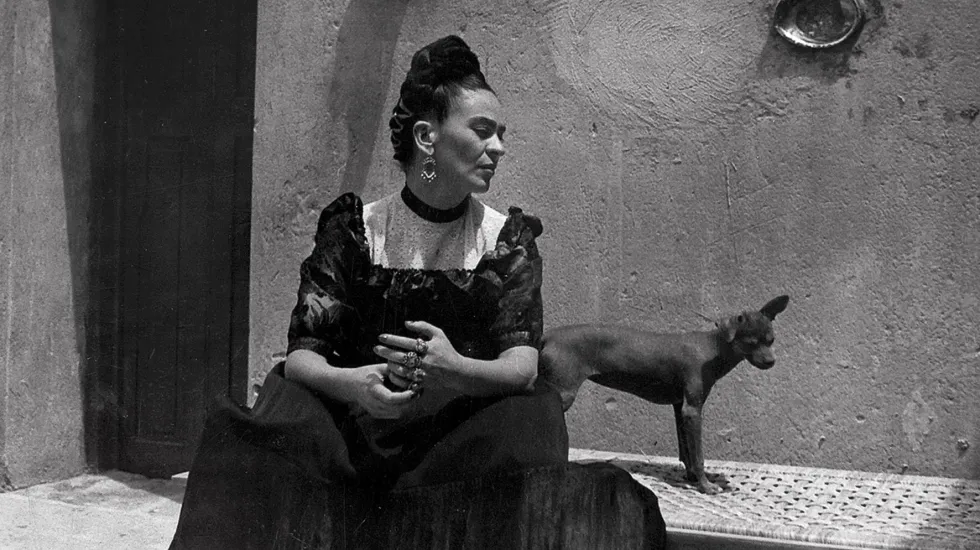
Mexican artist Frida Kahlo is best known for her vibrant self-portraits that mix realism with fantasy, nature and Mexican culture.
She also had a love of photography. While she is not widely known as a photographer, she was an avid collector, having amassed nearly 6,000 photographs, some purchased, some gifts, some inherited.
Some of those images belonged to her family, others to her husband, painter Diego Riviera, but it was Kahlo who treasured the photographs and curated the collection.
Now, 240 of the photographs are featured in “Frida Kahlo, Her Photos,” a traveling exhibit on display in Pilsen at the National Museum of Mexican Art.
‘Frida Kahlo, Her Photos’
When: April 1-Aug. 7
Where: National Museum of Mexican Art, 1852 W. 19th St.
Admission: free.
Info: nationalmuseumofmexicanart.org
When Kahlo died at 47 in 1954, Riviera locked away some of her art and objects in a closet at La Casa Azul, the Mexico City home—which is now the Frida Kahlo Museum—where they lived and where Kahlo grew up.
Fifty years later. the room was unlocked, and the long-unseen photographs were discovered.
“Historians began studying the images and piecing together not a chronology of her life but rather a sort of in-depth look at what caught her eye,” says Cesareo Moreno, the National Museum of Mexican Art’s chief curator.
The exhibition is presented in six sections: The Origins; The Blue House; Politics, Revolutions and Diego; Her Broken Body; Frida’s Loves; and Photography. Each emphasizes the role photography played in Kahlo’s life and her artwork.
The intimate exhibit is a chance to get to know the woman behind the artist. The collection is wide-ranging and includes images of Kahlo throughout her life as well as chronicling family gatherings at La Casa Azul, the politics of the day, visits by indigenous groups, and Kahlo’s own health issues (she often painted while lying in bed after her many surgeries). One photo of Riviera bears a red lipstick print that one assumes was left by Kahlo; others are annotated with notes.
Kahlo’s German immigrant father Guillermo Kahlo, a photographer, helped her develop an appreciation for the art form, which would influence her paintings.
“Photography was a part of Frida’s life from the get-go,” Moreno says. “Her father took many self-portraits. And when you think of her paintings, many of which are self-portraits, you see a connection. Through him, she learned the power of the self-portrait.”

Along with photographs made by her father and a few she produced, the exhibition includes images by great photographers of the time who were Kahlo’s friends including Man Ray, Martin Munkacsi, Edward Weston, Brassai, Tina Modotti, Pierre Verger, Lola and Manuel Alvarez Bravo.
Moreno is drawn to the images of a younger Kahlo which he says are revealing and offer insight into the iconic persona she would become.

“Like most young people at that age, she is forming an identity, and it’s not necessarily super-political or as a suffering artist but rather just a young person coming into her own,” he says. “Her passion comes through in her gaze and in the way she stands. You get glimpses of this very unique individual who will later become this world-renowned artist.”
Moreno says he also hopes that people will recognize how Mexico influenced her development as an artist.
“She was a product of her culture, whether she pushed against it or embraced it,” he says. “This is a culture and society that had come out of the Mexican revolution, which had almost destroyed the country. It was a time when artists, printmakers, muralists felt a need to create, felt a call to arms so to speak.
“It was the Mexico of this time that allowed her to really become who she became, and I think in this photography exhibit we see a lot of the cultural icons, the political individuals who really motivated Frida to seek out the kind of creativity that she did.”








